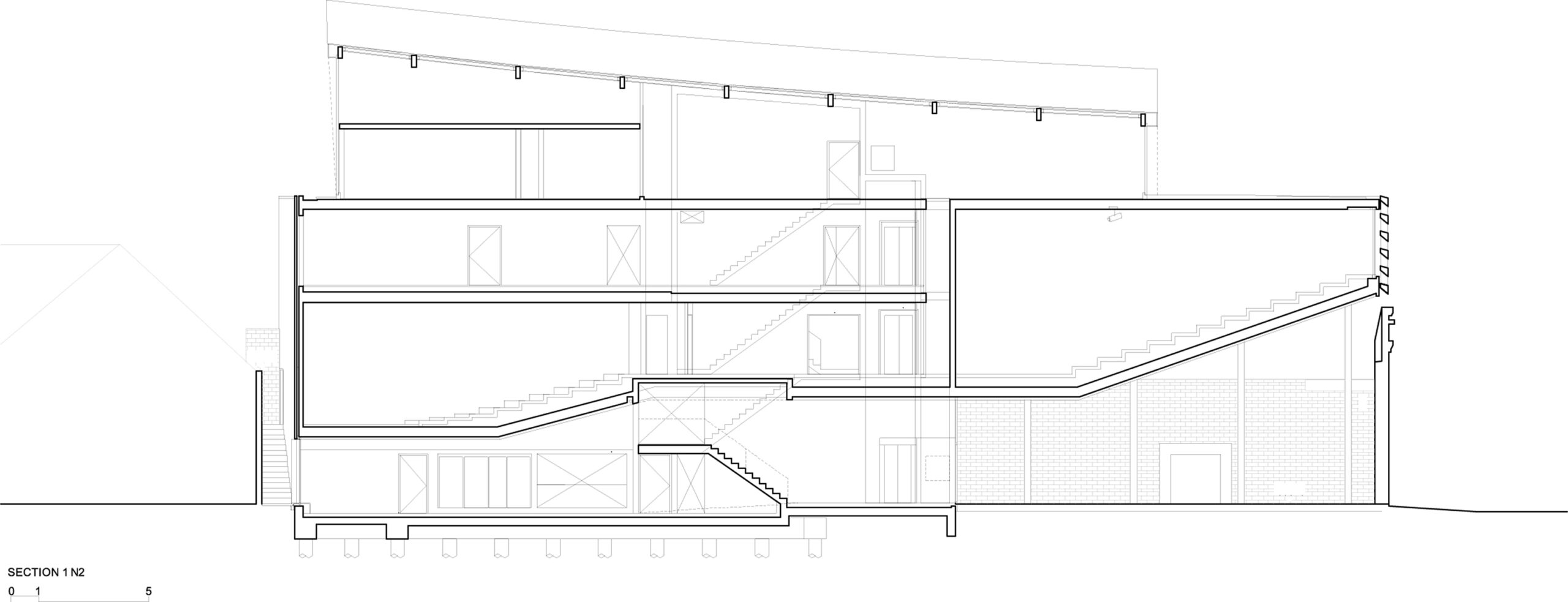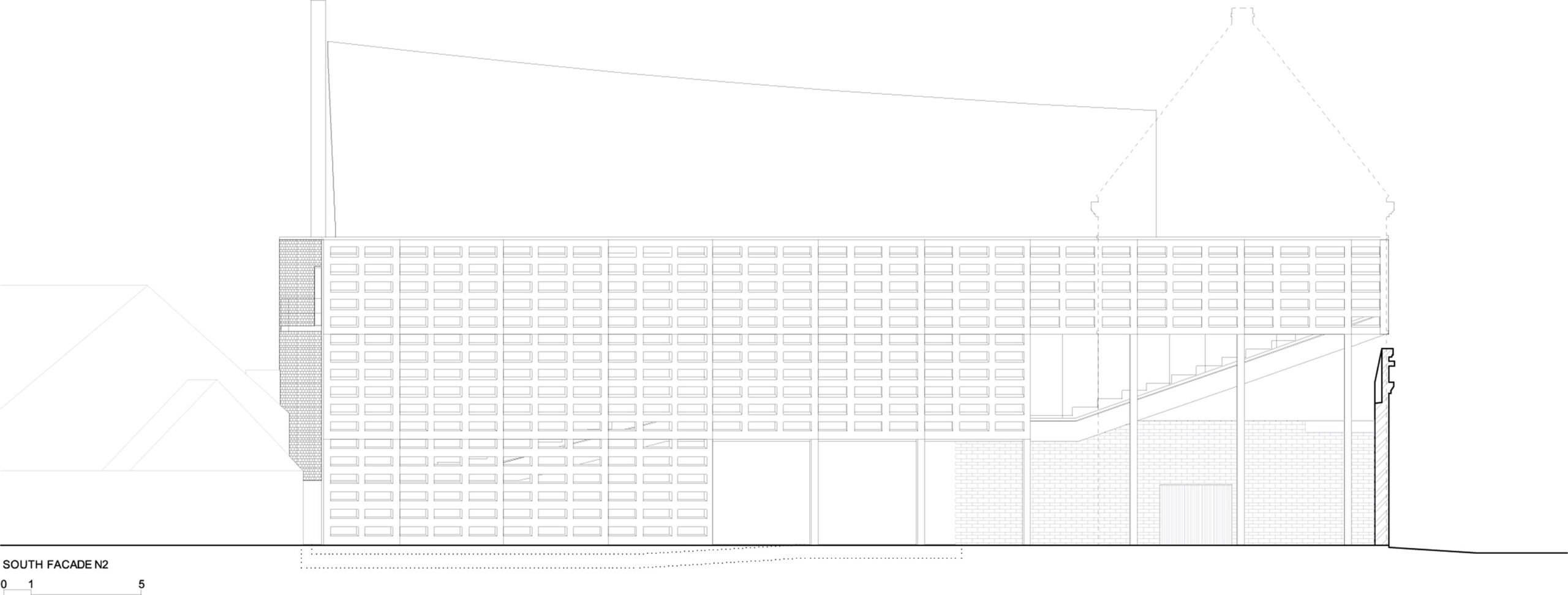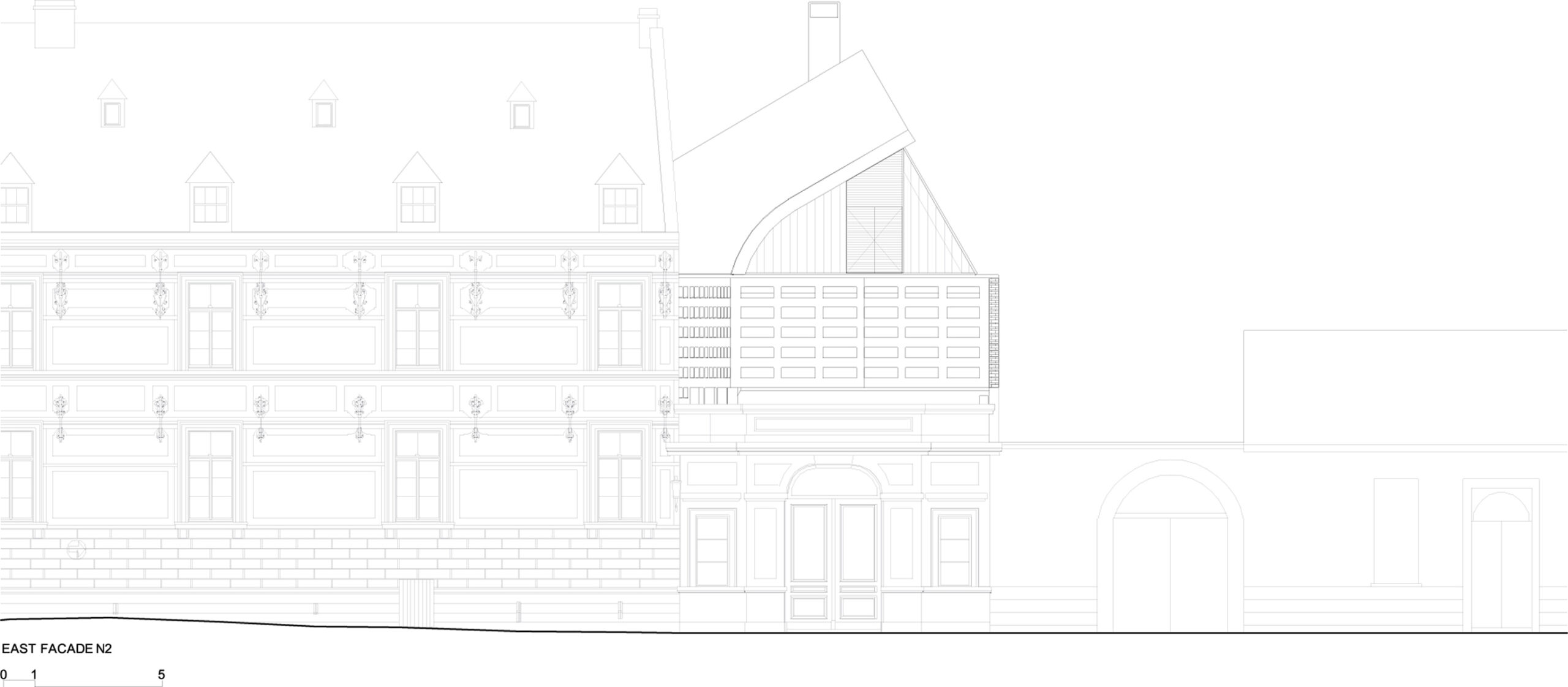The key issue here is how to insert new architecture in a loaded historical surrounding. Bruges is one of these cities that tries to keep its center intact, with the risk of banning too much of today’s city life . The city maintains a set of rules on scale, materials. roof inclinations… that are supposed to keep existing urban qualities intact. Among others, concrete façades and big glass surfaces are forbidden.
Two buildings are to be added to an old school campus, which will house a postgraduate law and economics school. The campus consists of a conglomerate of historical buildings organized around a sequence of enclosed courts. The campus is accessed from three different streets. The two new volumes replace less valuable old buildings. They are set freestanding from the old buildings while redefining the courts; their ground floor surface is partially open and continuous with the courts. N1 consists of classrooms end a central reception desk, N2 accommodates two lecture rooms, some offices and a foyer on ground floor. One side of the building covers an outside entrance space to the campus that is accessed from an existing gate on the main street.
A regular grid of prefabricated concrete elements forms both the supporting structure and a filter for light. The whitish, concrete outer surface is polished, which makes the material more ‘noble’ and acceptable for the city; inclined surfaces reflect the sunlight indirectly into the rooms. Behind the concrete structure is a full gloss façade composed out of translucent glass elements and transparent windows. The grid gives both a depth and a texture to the façade. On the court level the concrete elements continue as a screen or as a fence.























